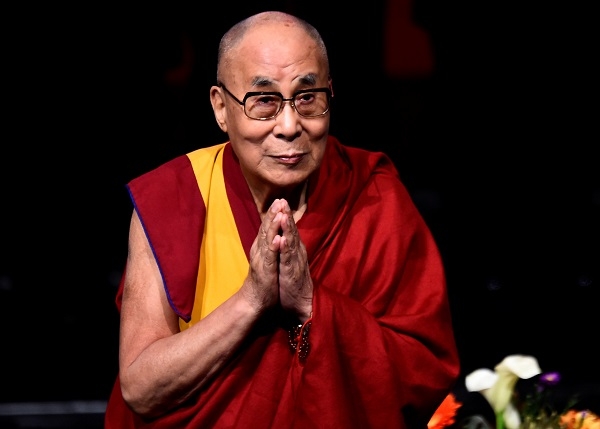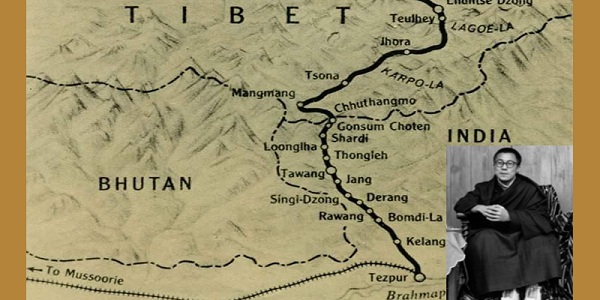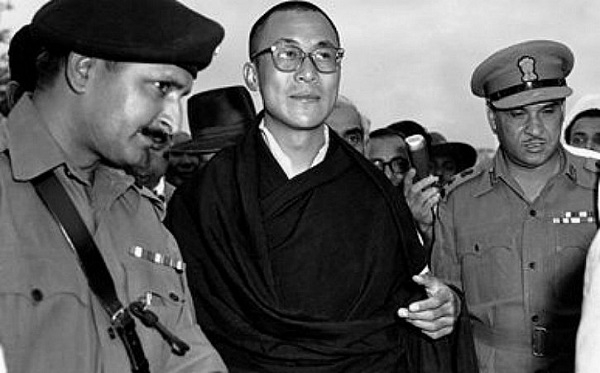When India was the only hope for the Messenger of Peace
21 Sep 2020 13:52:05
- Himali Nalawade
When India calls herself a peace loving nation, it is not only a political statement but we have our own share of tales from the past which connect us emotionally to a peaceful world. Indians share a close relation with Tibetans. There are many reasons for this but one cause stands in the forefront and that is when the Chinese army was occupying the Tibetan land in every possible way, and had targetted his holiness the Dalai Lama, India was the only place where he was confident to seek help from.

Dalai Lama's request didn't go unattended and India, who herself was a new born nation, struggling to reorganize amongst itself, stood firm to extend help to his holiness and almost around 80000 Tibetan refugees to seek shelter in India. The Dalai Lama, who is known as the messenger of peace around the world, was in grave danger but there was no country and no super power who stood ahead in order to help him out. The United Nations too, had abandoned to act up on the Chinese violations in the Tibetan land.
His holiness, the Dalai Lama happened to visit Arunachal Pradesh in 2017 where he remarked, “Every time I visit these areas, the Tawang area, it is very emotional for me. I see the place where I had enjoyed freedom for the first time”. The current Dalai Lama is the 14th in progression and he was as young as 23 years old when he had to escape his homeland Tibet for being chased by the Chinese PLA. After crossing a distance of almost 300 miles and the mighty Brahmaputra during the summers when all the ice would melt resulting into increasing water levels of the Himalayan rivers, in the most disheartening conditions, the Dalai Lama reached Tawang in March 1959.
Dalai Lama's escape from Tibet was not an isolated event. China had been exhibiting aggression in Tibet since the 1940's. Tibet was invaded by the Chinese in 1949 and in 1950 it was officially announced by the Tibetan government that it was under Chinese attack. The Dalai Lama being the spiritual head of the Tibetan masses was trying his best to maintain peace. Although Tibetans are known as peace loving people around the world, the Chinese coercion into their land was not at all entertained resulting into several revolts at places against PLA's unjust violence. The picture seemed justified on the Tibetan's side that the world should not expect peaceful people for continuing to enshoulder the responsibility of nurturing the idea of peace and continue to take bullet in their chest, standing alone for the cause. However, it was still held by Dalai Lama that Tibetans should stick to their peaceful beliefs.

Things had already turned against the Tibetans but it completely went out of hands when the Chinese conspired to kill Dalai Lama. In a very suspicious manner, the Chinese had suddenly started acting closely to his holiness. The suspicion was confirmed when Dalai Lama was invited by the PLA to their nearest camp to watch the dance performances of tribals, but only without his personal security and guards. The Tibetans knew that Chinese had planned to end the legend of Tibetan Buddhism by aiming at the Dalai Lama. And this is how, his holiness, who is known as the messenger of peace around the world, was forced to flee from his own land threatened by the Chinese expansionism.
Dalai Lama left Norbulingka, where he resided in Tibet, on 17 March 1959 disguised as a soldier, with his guards and family. They would travel only at night to save themselves from the sight of PLA during daytime. In his autobiography ‘Freedom in Exile’, the Dalai Lama writes: "From Lhuntse Dzong we passed to the small village of Jhora and from there to the Karpo pass, the last before the border. Just as we were nearing the highest point of the track we received a bad shock. Out of nowhere, an aeroplane appeared and flew directly overhead. It passed quickly – too quickly for anyone to be able to see what markings it had – but not so fast that the people on board could have missed spotting us. This was not a good sign. If it was Chinese, as it probably was, there was a good chance that they now knew where we were. With this information they could return to attack us from the air, against which we had no protection. Whatever the identity of the aircraft, it was a forceful reminder that I was not safe anywhere in Tibet. Any misgivings I had about going into exile vanished with this realisation: India was our only hope."
For all the time, the Dalai Lama was on a flee and on Tibetan land, the Khampa tribe and a rebel group called Chushi Gangdrug had been a great support to him. Here lies another intriguing question about the whole scenario. The United Nations, who ideally should have took a stand against Chinese expansionism, had denied to interfere in the Asian conflicts. But interestingly, the CIA had provided armed support to the rebel group of Chushi Gangdrug to fight the Chinese. This was a twisted act by the Americans where they didn't directly confront the Chinese by helping Dalai Lama but initiated the Tibetan unrest and pushed them towards armed violence. This act was only aimed at maintaining the American diplomacy in global politics and the Tibetan masses were not even considered. Few days after Dalai Lama's exile it was known that the residence at Norbulingka was attacked by PLA causing several casualties including Buddhist monks.

There was no doubt that the nation who will help Dalai Lama will be on direct target of the Chinese after that. It was no different for India. In fact, later it did result in a confrontation against the Chinese in the 1962 Sino Indian war, for which this too stands as a potential cause. Therefore, the question whether to help Dalai Lama or not was on top priority in the Indian parliament. According to an excerpt from the book 'An Officer and His Holiness : How the Dalai Lama crossed into India' by Rani Singh it has been mentioned that "Around the same time, PM Nehru was telling the Parliament in Delhi that stories of civil conflict in Lhasa were nothing more than rumour. Three days later, on 20 March, the PLA shelled the Indian Counsel’s offices in Lhasa." However, Sardar Vallabhai Patel, who was the Home Minister at that time, suggested that sooner or later, Tibet will be followed by Arunachal Pradesh on the Chinese target. Therefore, it is high time for India to take a defensive stand against Chinese aggression since conflict with the Chinese was inevitable.
After several rounds of parliamentary discussions, it was decided that India will stand with Dalai Lama and Tibetan refugees to help them seek shelter. The Indian Army posts along the McMohan Line were put on high alert and a troop of Assam Rifles received his Holiness on the Indo Tibetan border near Arunachal Pradesh. Today, on World Peace Day, it is important for all Indians to remember that even when India was not a stable nation, and in fact was in a volatile state internally, we have bravely stood for peace and that too at the cost of confronting China who was at that time a stronger nation to raise conflicts against. The picture has certainly changed today. India has become a much stronger nation than it was in the 1960's. But we still stand firmly by the Tibetans for their struggle to liberate their mother land and for peace.